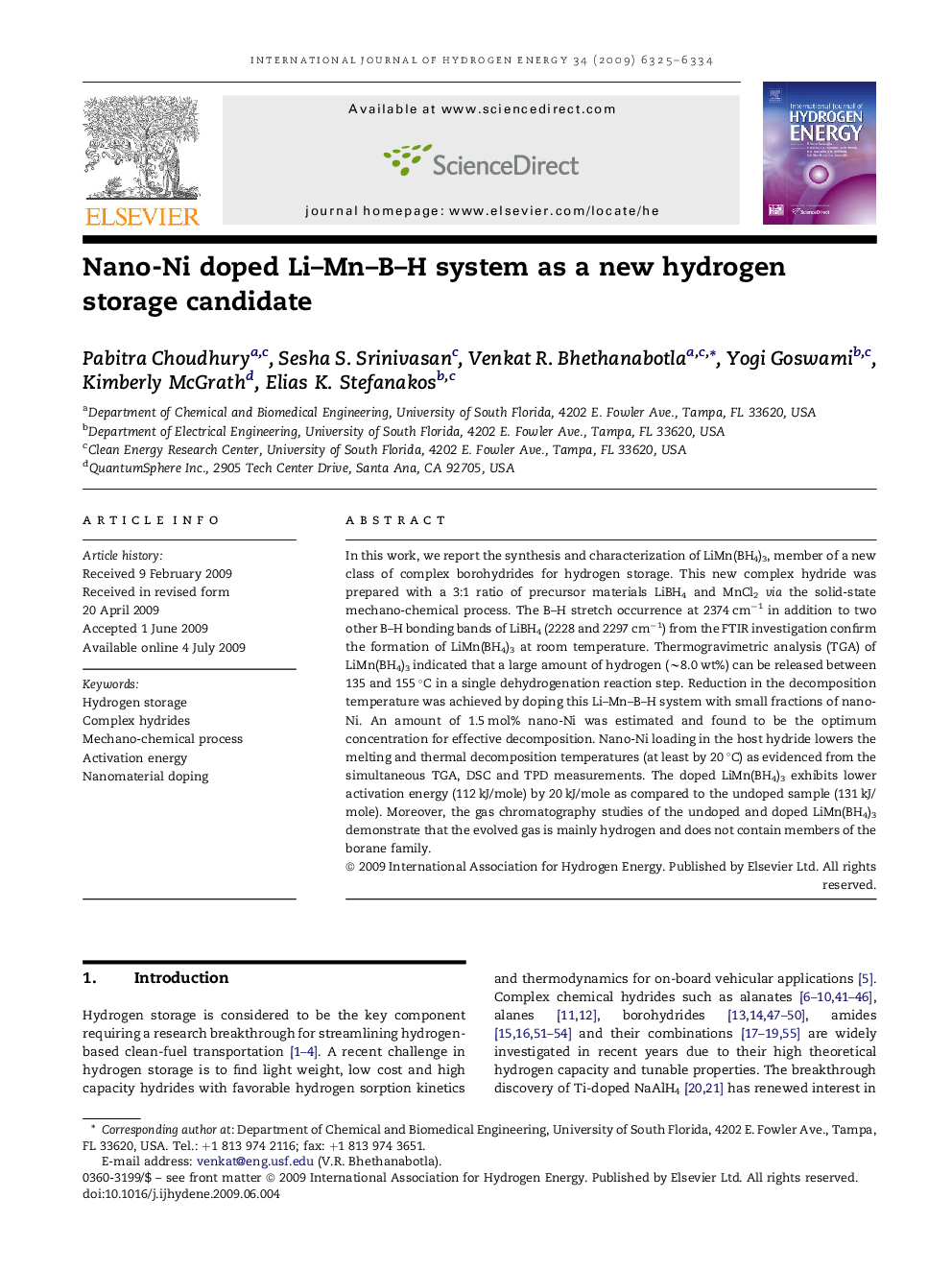| Article ID | Journal | Published Year | Pages | File Type |
|---|---|---|---|---|
| 1283143 | International Journal of Hydrogen Energy | 2009 | 10 Pages |
In this work, we report the synthesis and characterization of LiMn(BH4)3, member of a new class of complex borohydrides for hydrogen storage. This new complex hydride was prepared with a 3:1 ratio of precursor materials LiBH4 and MnCl2via the solid-state mechano-chemical process. The B–H stretch occurrence at 2374 cm−1 in addition to two other B–H bonding bands of LiBH4 (2228 and 2297 cm−1) from the FTIR investigation confirm the formation of LiMn(BH4)3 at room temperature. Thermogravimetric analysis (TGA) of LiMn(BH4)3 indicated that a large amount of hydrogen (∼8.0 wt%) can be released between 135 and 155 °C in a single dehydrogenation reaction step. Reduction in the decomposition temperature was achieved by doping this Li–Mn–B–H system with small fractions of nano-Ni. An amount of 1.5 mol% nano-Ni was estimated and found to be the optimum concentration for effective decomposition. Nano-Ni loading in the host hydride lowers the melting and thermal decomposition temperatures (at least by 20 °C) as evidenced from the simultaneous TGA, DSC and TPD measurements. The doped LiMn(BH4)3 exhibits lower activation energy (112 kJ/mole) by 20 kJ/mole as compared to the undoped sample (131 kJ/mole). Moreover, the gas chromatography studies of the undoped and doped LiMn(BH4)3 demonstrate that the evolved gas is mainly hydrogen and does not contain members of the borane family.
